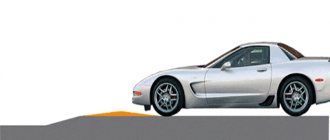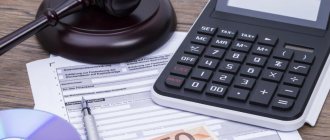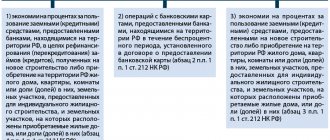Fixed assets are company assets that serve for a long time and are replaced with others only as they wear out. Depreciation of fixed assets is considered to be the gradual loss of property's own use value. During operation or, conversely, downtime, any object of production assets consistently wears out - buildings are destroyed, spare parts and parts wear out, machines, vehicles and equipment fail. We will discuss OS wear, its types and calculations that allow us to determine the percentage of wear of an object in our article.
Depreciation of fixed assets: physical and moral
So, OS wear and tear is the loss of value during operation or inactivity. It can be physical or moral. Physical manifests itself as the loss of technical qualities and characteristics under the influence of time and production processes. Physical wear and tear is divided into productive (in which a loss of value occurred during operation) and unproductive (when an object wears out after being in storage for a long time).
Moral wear and tear is when the value of an object decreases as a result of the appearance on the market of its improved analogues with higher productivity and lower cost.
By studying the logic of physical and moral wear and tear, the duration of wear of a certain OS object is established. These studies form the basis for the calculated standard service lives (SLI) of property and depreciation rates.
Factors of production. Capital
Definition 2
Factors of production are the resources used in the production process to create goods and services.
The main economic system is the production process, which includes the stages of creating goods needed by society. As well as the distribution of goods and services using built-in market mechanisms, or the influence of government power. This also includes sales and delivery of benefits to consumers, final consumption of finished products and services. Each subject of industrial relations strives to maximize its own benefit. Commercial economic agents try to increase profits by operating in given conditions with limited resources. Households want to obtain marginal utility from the acquisition of finished goods, as well as realize their potential in the labor market. The state is interested in a successful macroeconomic situation, since its income directly depends on the number of incoming tax payments to the budget.
Are you an expert in this subject area? We invite you to become the author of the Directory Working Conditions
The creation of wealth becomes possible subject to the availability of production factors, which include land, capital, labor and entrepreneurial talent. In recent years, information has increasingly been called another factor of production. Its peculiarity is that when selling information, it does not exclude the seller’s ownership of it.
As a rule, the supply of production factors is carried out by households that receive income from them. The population becomes the supplier of land, capital and labor. The consumer of production factors is the real sector of the economy, which uses them to create economic benefits.
Capital is property used for production. It can be material and financial. Investment of property and money into production activities is called investment activity. In material form, capital is expressed in the form of human-produced objects that can be further used in the production process. Physical capital is usually represented by machines and equipment, tools, transport, infrastructure, and so on. Financial capital is represented by cash and securities that can be used in the production process or bring additional income to the manufacturer. Capital is also divided into fixed and circulating capital.
Finished works on a similar topic
Course work Physical and moral wear and tear of fixed assets 410 ₽ Abstract Physical and moral wear and tear of fixed assets 240 ₽ Test paper Physical and moral wear and tear of fixed assets 230 ₽
Receive completed work or specialist advice on your educational project Find out the cost
Depreciation and amortization of fixed assets
In order to timely replace fixed assets with worn-out resources without damaging the company’s activities, it is necessary to provide a mechanism for transferring the value of retired assets to manufactured products. This is how the depreciation fund is replenished, the funds of which will subsequently be used to purchase new fixed assets. Only under this condition is reproduction of the PF possible.
Thus, depreciation and reproduction of fixed assets are inseparable categories, and the process of successively transferring the cost of fixed assets to manufactured products in order to accumulate funds for the reproduction of fixed assets is called depreciation. The sinking fund is a special reserve that is a financial resource for capital investments.
Wear calculation
The transfer of the cost of fixed assets to the company's products is carried out by charging depreciation of fixed assets. It is based on the calculation of depreciation, based on the principle of gradualism. Depreciation expenses are considered to be amounts that form part of the cost of fixed assets and are then transferred to the price of the product. They form the cost item “depreciation” in the cost of the product. Their size is set as a percentage according to standards calculated on the basis of approved OS classifiers.
All fixed assets are divided into 10 depreciation groups, and the main criterion for division is the service life of the object. For example, the 1st group includes OSes with a service life of no more than 2 years, and the 10th group includes objects whose operation is expected to last over 30 years. Tax accounting is guided by the determination of the depreciation group of an object based on the classifier, accounting - establishes it based on considerations of expected operation.
The depreciation rate is the percentage of depreciation of fixed assets, the calculation formula of which is the ratio of one unit to the number of months of effective operation of the facility. We can assume that depreciation is an expense calculated as a percentage of the cost of the asset, allocated to production costs and included in the cost of the product.
25. Depreciation of fixed assetsDepreciation –
monetary expression of depreciation, reflecting the transfer of the cost of the asset to the manufactured product (service).
Physical wear and tear
- This is the wear and tear of the means of labor due to industrial consumption.
Obsolescence
- this is a reduction in the cost of production of existing PFs and the invention of more advanced means of labor.
Sinking fund (FA)
reflects the total cost of the PF, which must be transferred to the manufactured product or service for the entire service life, i.e., the amount that, by the time of disposal of the PF, would ensure the possibility of their reproduction:
F
=
PV
+
KR
+
M
+
L
,
where PV
– full replacement cost of the PF;
KR
– the cost of major repairs during the depreciation period;
M
– the cost of modernization during the depreciation period;
L
– liquidation value of fixed assets minus the costs of their dismantling.
The volume of annual depreciation charges is the ratio of the volume of the depreciation fund to the service life of the asset in years.
The percentage ratio of the volume of annual depreciation charges to the total replacement or original (PP) cost is called the depreciation rate.
Absolute amount of depreciation
is defined as the difference between the full, initial or replacement cost and the residual cost, taking into account wear and tear or replacement cost taking into account wear and tear. The ratio of the amount of depreciation of fixed assets to their total cost is the depreciation coefficient.
The inverse indicator is the suitability coefficient,
characterizing the unworn part of fixed assets.
The form of depreciation, which is based on the condition that the process of depreciation of fixed capital occurs evenly throughout its entire service life, is called linear:
E.A.
= (
V
1 –
V n
+1) /
n
,
where E
A
is the annual depreciation fund;
V – the full initial cost of fixed assets at the beginning of the first year;
V
n+1
– value of funds at the time of disposal (after
n
years of service).
The accelerated depreciation method is determined by multiplying the cost of the asset minus depreciation (residual value) at the beginning of the year by an amount equal to (2 / n), where n
is the service life of the assets).
The annual depreciation fund with increasing depreciation is calculated using the formula:
E.A.
= (
V
1
r
) / [(1+
r
)
n – f
+ 1 – 1],
where E
A
is the annual depreciation fund;
V
1 – full initial cost of fixed assets at the beginning of the first year;
r
– discount interest rate;
n
– service life of fixed capital (in years) – estimated.
Table of contents
Degree of depreciation of fixed assets
To determine the degree of wear, an indicator such as wear coefficient is used. It shows how worn the object is, i.e. the user will find out to what extent the upcoming replacement of the object is financed as it wears out. It is calculated by the ratio of the amount of accrued depreciation to the original cost of the object.
For example, a company operates a machine with wear and tear, i.e. depreciation charges, in the amount of 20,000 rubles. The initial cost of the machine is 100,000 rubles. Let's calculate the degree of depreciation of fixed assets - this can be done using the formula:
K = AO / PS x 100, where AO is the amount of accrued depreciation, and PS is the original cost.
K = 20,000 / 100,000 x 100 = 20%
This means that the object is worn out by 20%, i.e. The accumulation of the depreciation fund for the purchase of a new machine is 20%. Thus, the depreciation of the enterprise's fixed assets is equal to the amount accumulated for their reproduction.
Causes of obsolescence
Obsolescence of fixed assets begins to play an important role in production costs. There are several reasons for this:
1. The production of the same types of fixed assets becomes cheaper. It happens like this. Manufacturers are trying to reduce production costs, using other technologies and economical materials. As a result, the price, for example, of the equipment they produce becomes lower. And the same equipment previously purchased from the same manufacturer becomes obsolete. Because it cost more. The production costs of its products turned out to be higher. Since the depreciation rate takes into account the initial cost of fixed assets. When carrying out an accounting revaluation of fixed assets, the loss will be the difference in prices.
2. Updating technologies or releasing improved analogues of equipment. They are faster; have better accuracy, are more economical, and require fewer repairs. And most importantly, they allow us to produce products at low cost. With the development of technical developments, products of the mechanical engineering industry, for example, are updated every 5-6 years. In computer production, updates occur every 2–3 years. Using outdated technology is unprofitable. The business owner incurs losses from production costs. And again, losses when revaluing means of production, since depreciation does not cover their cost.
3. Social cause of obsolescence. When fixed assets do not meet the socially accepted level of safety or environmental safety. Sometimes replacement of fixed assets is not necessary. For example, when a building becomes obsolete, it no longer meets new sanitary standards or planning projects. Then it needs to be modernized. Or carry out a major overhaul.
Depreciation rate of fixed assets: formula for calculating the balance sheet
You can find data on accrued depreciation of fixed assets in the notes to the balance sheet. They are in the form of Appendix No. 5 to the balance sheet, which was part of the financial statements until 2011. Despite the fact that the mandatory nature of this form has been cancelled, it is used to explain the dynamics of OS in the period under review. The formula used to calculate the amount of depreciation of fixed assets, in relation to the explanations, looks like this:
K = gr.5 lines 5200 f.5 / gr. 4 lines 5200 f.5 x 100
Analysts consider the depreciation rate of a fixed asset together with the serviceability rate of the fixed asset, calculated as the ratio of the residual value to the original value.
These indicators characterize the state of the asset and have an analytical meaning, often conditional, since the method of calculating depreciation plays an important role. You can find more complete information on the topic in ConsultantPlus. Free trial access to the system for 2 days.









